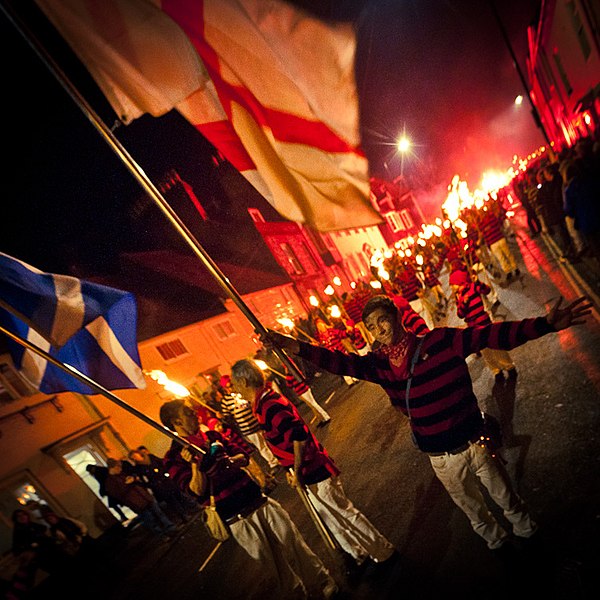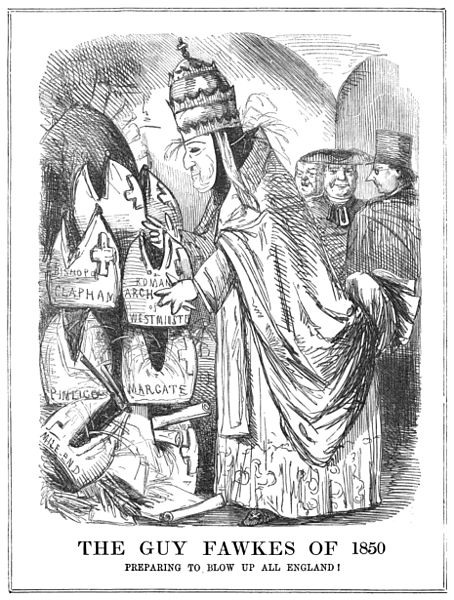Guy Fawkes Night, also known as Guy Fawkes Day, Bonfire Night and Fireworks Night, is an annual commemoration observed on 5 November, primarily in Great Britain, involving bonfires and fireworks displays. Its history begins with the events of 5 November 1605 O.S., when Guy Fawkes, a member of the Gunpowder Plot, was arrested while guarding explosives the plotters had placed beneath the House of Lords. The Catholic plotters had intended to assassinate Protestant king James I and his parliament. Celebrating that the king had survived, people lit bonfires around London. Months later, the Observance of 5th November Act mandated an annual public day of thanksgiving for the plot's failure.
Festivities in Windsor Castle by Paul Sandby, c. 1776
An effigy of Fawkes, burnt on 5 November 2010 at Billericay
Revellers in Lewes in East Sussex, 5 November 2010
The restoration of the Catholic hierarchy in 1850 provoked a strong reaction. This sketch is from an issue of Punch, printed in November that year.
A bonfire is a large and controlled outdoor fire, used either for informal disposal of burnable waste material or as part of a celebration.
A midsummer bonfire in Seurasaari, Helsinki, Finland
On the beaches of Duindorp (pictured) and Scheveningen, both part of The Hague, teams annually compete to build the world's largest bonfire
Lag BaOmer kumzits in Israel, 1972. Dan Hadani collection, National Library of Israel
Preparations for Holika Dahan Kathmandu, Nepal








